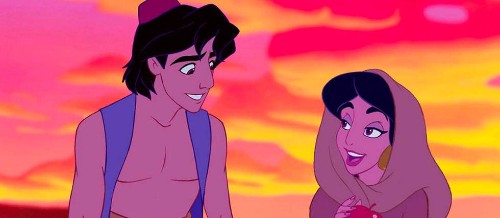
*This is a user-submitted post by Jordan Hashemi-Briskin*
When Westerners think of the Middle East nowadays, they typically envision bloodthirsty, war-hungry savages who go around spreading terror and killing others—and occasionally themselves— supposedly in the name of the Creator. Obviously, that is only true of a few individuals who have corrupted Islam by using it as a screen for their political ideals.

At the opposite extreme, people from the Middle East (which extends from Afghanistan to the Arabian Peninsula and the Holy Land) and North Africa are viewed as a society where people consort with jinni (spirits) and/or fly on rugs, men walk on hot coals, vendors harass people into buying their merchandise, thieves are punished by the loss of their hands, women are eroticized, and the only forms of transportation are camels or horses. In short, when Arabs, Persians, or other Middle Eastern peoples are not being shown as a bunch of terrorists, they are viewed through the prism of the romantic, Orientalist stereotypes perpetuated by regional folklore and myth, exemplified in The Book of 1,001 Nights.
Having recently begun to seriously connect with my own Middle Eastern heritage (I claim Persian ancestry on my father’s side of the family), it has come to irk me to no end that there are so few accurate depictions of Middle Eastern life and culture—both Islamic and Judaic—in mainstream Western media, most notably in the medium of animation.
Animation is, one would argue, the best way to introduce Westerners to other cultures, humanizing people about whom many people in the U.S. and Europe know next to nothing. The first real attempt to accurately portray a non-Western culture via animation—both visually and in terms of the writing— was with Pocahontas. Despite its good intentions, the film is still largely based on the Western layman’s idea of what First American culture is. (Still, it was a start, and a start’s better than nothing, right?) With each successive attempt from Mulan onward, Western animated filmmakers have gotten progressively better in terms of cultural sensitivity, coming to a head with the recent successful portrayal of Oceanic, East Asian, and Latin American culture in Moana, Kubo and the Two Strings, and Coco, respectively.
This brings us back to the portrayal of the Middle East in animation. Up until Persepolis and, most recently, The Breadwinner, pretty much every animated feature or short film (Western-produced, that is) set in the region has been steeped in Orientalist stereotypes. By far, the best-known examples of this are 1926’s The Adventures of Prince Achmed (the oldest surviving animated feature, and Lotte Reiniger’s magnum opus), The Thief and the Cobbler (Richard Williams’ dream project that started production in the 60’s and ultimately finished production in the 90’s), and, of course, the one that audiences around the world know and love dearly: Disney’s Aladdin.

(Aladdin, as I’m sure everyone in this community is aware, has been the subject of heated discussion in regards to its portrayal of the Islamic world since it was released 25 years ago—the development of the upcoming live-action remake seems to have rekindled that debate, as far as I can tell.)
Luckily, things appear to be starting to turn around; as previously stated, Persepolis (2005) and The Breadwinner (2017) have enjoyed great success, as has the 2011 film adaptation of Joann Sfar’s graphic novel series The Rabbi’s Cat. Meanwhile, on television, the youth-oriented series 1001 Nights (based on the lesser-known entries in the famous folktale anthology) premiered around this time in 2011, created by Iranian-Americans Aly Jetha & Shabnam Rezaei.
On a more personal note, I happen to be studying to pursue a career in feature animation, with the ultimate goal of directing some animated features of my own. And one of the films I hope to make is a hand-drawn musical adaptation of the Algerian Jewish folktale The Sabbath Lion (which was put down in book form in 1992). While it centers on Jewish culture, the story is set in a mostly Muslim country, so I intend to pay as much attention to the traditions of Islam in the film as Judaism. (My dad was born Muslim but converted to Christianity, and my mom raised me as a Jew, so I hope for this to be a way to reconcile both parts of my heritage.)

If any of you who read this are of Middle Eastern heritage, I would greatly appreciate your views on the matter. How far has Western animation come in portraying our culture, and how much further should we go?
Edited by: Kelly Conley





![[OPINION] 10 Heartwarming Animated Adverts to Watch This Holiday Season](https://www.rotoscopers.com/wp-content/uploads/2021/12/Picture61-350x250.jpg)
